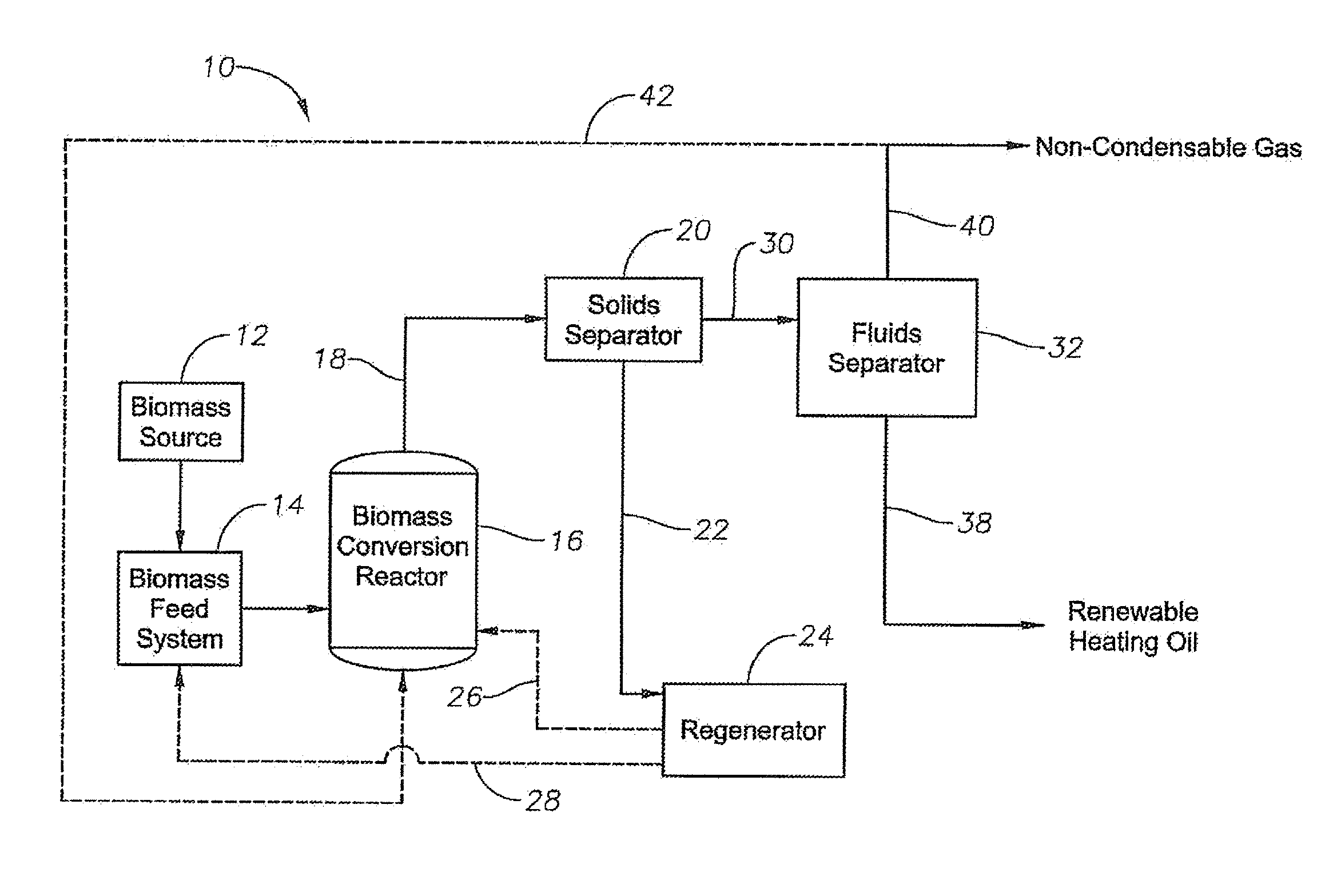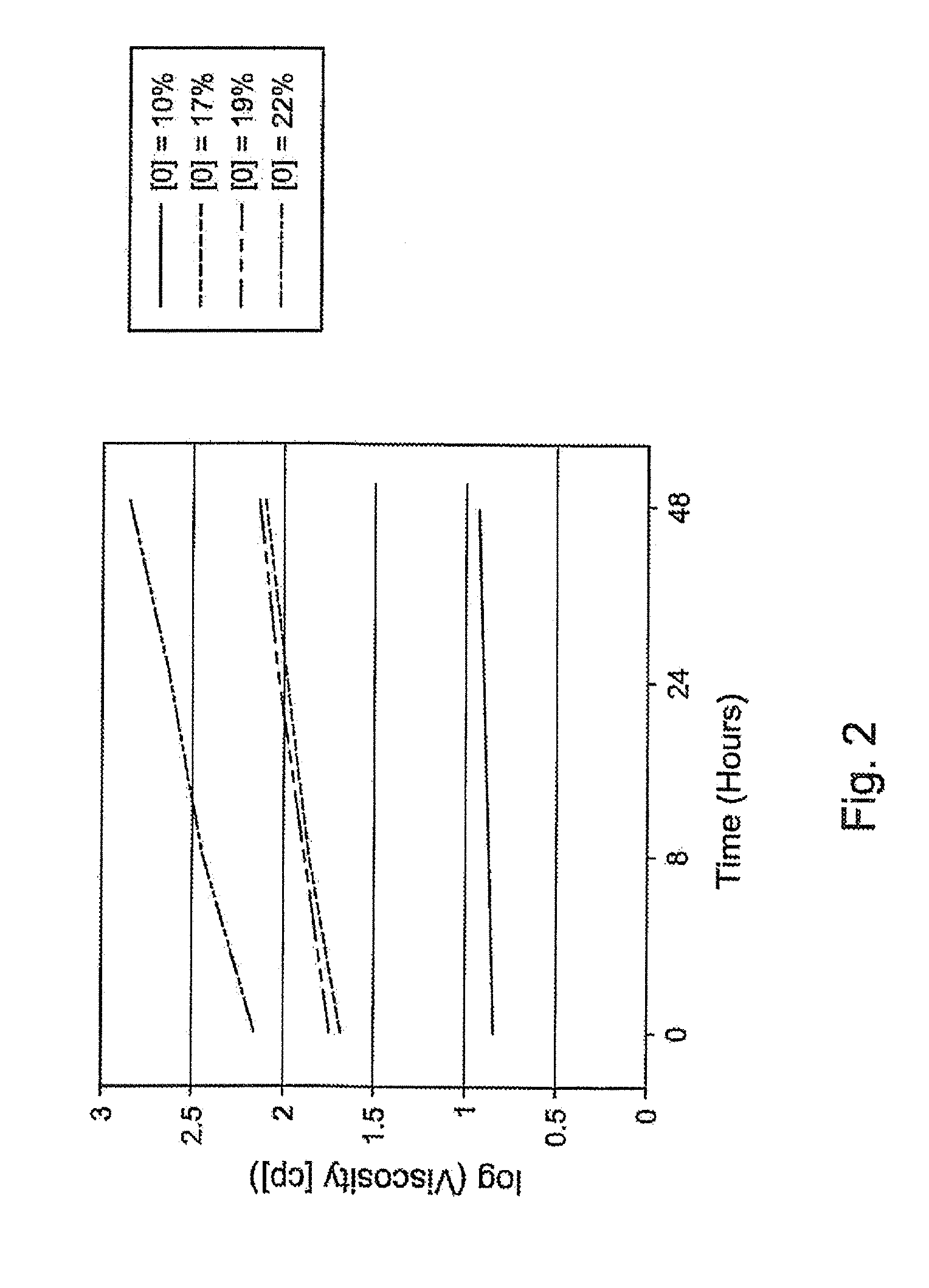Liquid bio-fuels
- Summary
- Abstract
- Description
- Claims
- Application Information
AI Technical Summary
Benefits of technology
Problems solved by technology
Method used
Image
Examples
example 1
[0088]Three bio-oil samples were produced from the conversion of yellow pine particles. Sample A was produced by biomass catalytic cracking using a clay-type catalyst in a riser reactor operated at a reactor outlet temperature of about 550° C. Samples B and C were produced by biomass catalytic cracking using a zeolite-type catalyst in a riser reactor operated at a reactor outlet temperature of about 600° C. The oxygen content and heating value of the bio-oil were determined by ASTM D5291 and ASTM D240 test methods, respectively. The results are shown in Table 1.
TABLE 1Sample ASample BSample COxygen Content241710(% wt.)Heating Value11,26113,72715,156(btu / lb)For comparison, the heating value of typical pyrolysis bio-oils does not exceed 10,000 btu / lb as can be seen from a) Mahinpey, N.; Murugan, P.; Mani, T. and Raina, R. Analysis of bio-oil, biogas, and biochar from pressurized pyrolysis of wheat straw using a tubular reactor. Energy & Fuels 2009. 23 (5), 2736-2742; and b) Czernik, S...
example 2
[0089]Stability was assessed for four samples of bio-oil based on changes in viscosity using an accelerated thermal stability test based on the observations of Czernik et al. as reported in Czernik, S.; Johnson, D. K. and Black, S. Stability of wood fast pryrolysis oil. Biomass and Bioenergy 1994. 7 (1-6), 187-192. Czernik et al. illustrates that viscosity changes for bio-oil stored 12 weeks at 37° C. corresponds to 6 hours at 90° C. and, hence, that viscosity changes for bio-oil stored 1 year at 37° C. corresponds to 24 hours at 90° C. The accelerated thermal stability test used for the inventive bio-oil samples in these examples comprised heating the samples to 90° C. and holding the samples at that temperature for 48 hours. Test amounts were taken from the samples at 0, 8, 24 and 48 hours and viscosity measurements were taken with the test amount temperature being at 40° C. Viscosity was measured using a modified version of ASTM D2983 using a higher temperature than standard due ...
example 3
[0091]Three additional bio-oil samples produced from southern yellow pine by biomass catalytic cracking using a zeolite-type catalyst in a riser reactor operated at a reactor outlet temperature of about 500 to 650° C. The three bio-oil samples were subjected to the accelerated thermal stability test in order to establish the effect of increased stability in the heat value of bio-oils. As shown in Table 2, ultra-stable bio-oils (bio-oils with a stability parameter of less than 1 cp / h) all exhibited low oxygen content and heating values greater than 10,000 btu / lb. Accordingly, the ultra-stable bio-oils all had superior heating value.
TABLE 2[O]Stability ParameterHeating ValueSample(wt %)(cps / h)(BTU / lb)Sample 890.1315200Sample 9100.2614939Sample 10120.3314500
PUM
 Login to View More
Login to View More Abstract
Description
Claims
Application Information
 Login to View More
Login to View More - Generate Ideas
- Intellectual Property
- Life Sciences
- Materials
- Tech Scout
- Unparalleled Data Quality
- Higher Quality Content
- 60% Fewer Hallucinations
Browse by: Latest US Patents, China's latest patents, Technical Efficacy Thesaurus, Application Domain, Technology Topic, Popular Technical Reports.
© 2025 PatSnap. All rights reserved.Legal|Privacy policy|Modern Slavery Act Transparency Statement|Sitemap|About US| Contact US: help@patsnap.com



